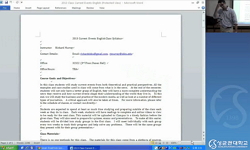This paper examines the narrative shift from the epistolary form to the journal form in Samuel Richardson’s Pamela (1740). While the majority of literary critics do not seriously consider Richardson’s use of different narrative forms in his episto...
http://chineseinput.net/에서 pinyin(병음)방식으로 중국어를 변환할 수 있습니다.
변환된 중국어를 복사하여 사용하시면 됩니다.
- 中文 을 입력하시려면 zhongwen을 입력하시고 space를누르시면됩니다.
- 北京 을 입력하시려면 beijing을 입력하시고 space를 누르시면 됩니다.

The Epistolary Form`s (In)effectiveness as a Moral Instrument in Richardson`s Pamela = The Epistolary Form`s (In)effectiveness as a Moral Instrument in Richardson`s Pamela
한글로보기https://www.riss.kr/link?id=A101572969
- 저자
- 발행기관
- 학술지명
- 권호사항
-
발행연도
2015
-
작성언어
Korean
- 주제어
-
등재정보
KCI등재
-
자료형태
학술저널
-
수록면
167-199(33쪽)
- 제공처
- 소장기관
-
0
상세조회 -
0
다운로드
부가정보
다국어 초록 (Multilingual Abstract)
This paper examines the narrative shift from the epistolary form to the journal form in Samuel Richardson’s Pamela (1740). While the majority of literary critics do not seriously consider Richardson’s use of different narrative forms in his epistolary novel, I argue it deserves our notice, for it is only after the novel transitions into the journal form that Mr. B begins to sympathetically identify with Pamela, which Richardson employs as his primary means of moral instruction. In examining how the eighteenth-century familiar letter, a form that was greatly popular during this period due to recent developments in the English postal system, simultaneously promotes and impedes sympathetic identification due to its dual capacity for intimacy and duplicity, I discuss how Richardson employs Mr. B, Pamela’s primary internal reader, to consider the potential advantages and disadvantages of using the epistolary form to inculcate morality in his external readers, a matter in which he was greatly interested and invested throughout the entirety of his literary career. We can see the narrative experimentation in Pamela as an extension of such interest, for Richardson endeavors to rid the epistolary form of its aforementioned complexity by using the journal form, which he presents as maintaining the letter’s sense of intimacy without retaining its potential for duplicity. Although it is difficult to determine how successful he was in addressing the potential problems familiar letters pose to his moral project, Richardson seems to have interpreted the overwhelming criticism from anti-Pamelists as an indication of his limited success. This helps explain why he resumed his narrative experimentation with the epistolary form in his later novel Clarissa, an attempt that similarly incited mixed responses in his readers, which I suggest might not have had much to do with Richardson and his abilities (or lack thereof), but rather the limitations of the epistolary novel itself, a genre that fell out of favor in the later eighteenth and nineteenth centuries.
동일학술지(권/호) 다른 논문
-
- 한국18세기영문학회
- 김순원 ( Soon Won Kim )
- 2015
- KCI등재
-
- 한국18세기영문학회
- 민자영 ( Jayoung Min )
- 2015
- KCI등재
-
것을 얻는 남자: 아프라 벤의 「방랑자」에 형상화된 가부장 사회의 위력
- 한국18세기영문학회
- 전인한 ( In Han Jeon )
- 2015
- KCI등재
-
Widowhood, Coquetry, and Desire in Jane Austen`s Lady Susan
- 한국18세기영문학회
- ( Sonjeong Cho )
- 2015
- KCI등재




 KISS
KISS







